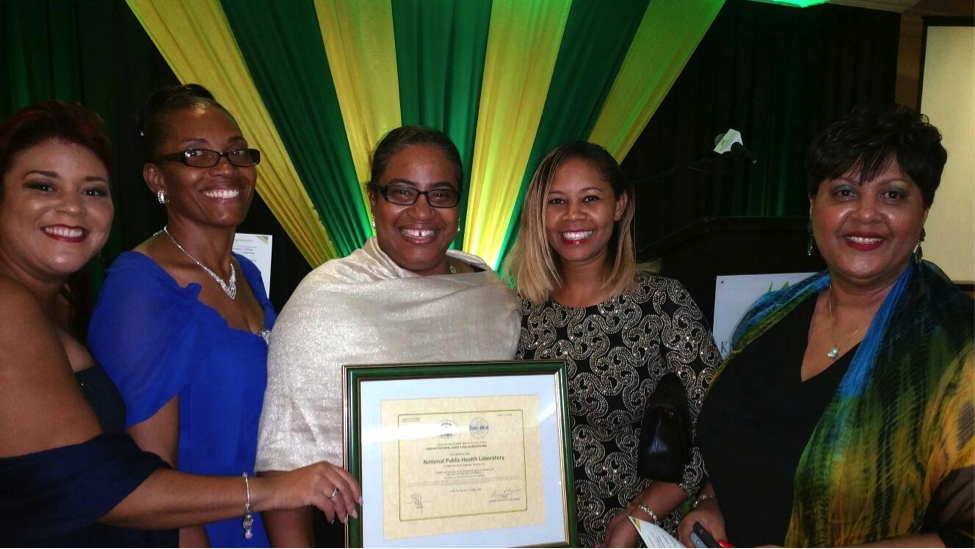National Public Health Laboratory Kingston Jamaica

From L-R: Annabelle Sherwood (Chief Med. Tech. for Haematology), Ilene Wright (Chief Med. Tech. for Clinical Chemistry), Dr. Angela Scott (Director, National Laboratory Services), Mitchelle Maylor-Archat (Coordinator, Medical Technology Services (Acting)), Andrea Orelue, Quality Assurance Coordinator (Acting)
- What was the hardest thing to do in order to get accredited?
One of the major challenges we faced was finding the resources to address major infrastructure challenges encountered due to the country’s tight fiscal space.
- What was the easiest?
The easiest was the willingness of the technical staff to implement improvement plans and help to get everyone on board.
- What was the most important contributing factor to getting accredited?
Teamwork and hard work. A Quality Assurance Committee was formed with members from every Department: Technical and Administrative. Committee members received extensive training (internally and externally), particularly from SLMTA, and the mentorship provided greatly assisted the team to prepare for accreditation. Taking advantage of mentorship and training available especially but not limited to that provided by CDC- AFENET, CROSQ and JANAAC.
- What steps did you take ?
- Step 1 : Designated a Quality Assurance Coordinator.
- Step 2 : Established a Quality Assurance Committee.
- Step 3 : Developed the Quality Management System and the requisite documentation: manuals, policies, procedures, worksheets and forms.
- Step 4 : Trained all staff to increase awareness of the QMS.
- Step 5 : Identified weak areas and assigned additional staff and resources to make the necessary improvements.
- Step 6 :Improved communication within the organization: increased the frequency of staff meetings, senior management meetings, and meetings with officials from the Ministry of Health.
- What were the biggest mistakes you made?
- Placing the responsibility of quality assurance on one person instead of having a QA Department for a laboratory of this size.
- Not developing a robust Internal Audit System sooner.
- Not adequately budgeting for the cost of accreditation (i.e. the financial support needed to implement all the improvement projects, etc.) necessary for meeting the requirements of ISO 15189:2012.
- What is the best advice you can give to others?
Do an initial needs assessment to determine the amount of financial support necessary to achieve accreditation goals. Foster esprit de corps where everyone shares the same drive to achieve accreditation. Constantly remind the team that so-called “mistakes” are not the end of the world, but a means to continually improve. Implement a strong internal audit system and monitor quality indicators, ensuring that appropriate corrective and preventive actions are put in place.
